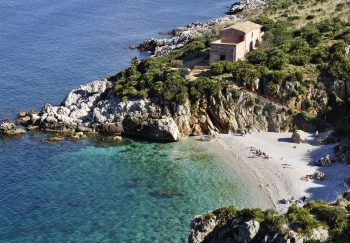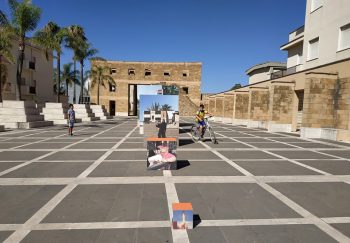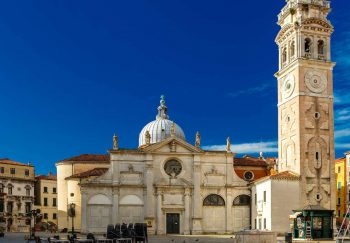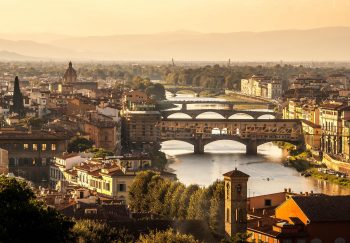Sicily is the mythic island… Homer’s epic hero Ulysses was attracted to Sicily by the song of the mermaids while he made his long return home.
The island’s triangular shape and its location in the middle of the Mediterranean has been a source of strong attraction. The most appealing thing about this island is the wide range of landscapes that can be found. These include hills and valleys, as well as the dramatic and active nature of volcanoes. It’s both hellish and beautiful at the same moment.
Its three sides are almost identical to those of the emerging continents: Africa Asia Europe. Nobody has ever passed through Sicily without leaving a trace of his journey, genetically or otherwise. The Sicilian is not distinguished by its distinctive features, such as being dark, oriental, Arab or blonde, and tall with red hair and green eyes.
So, literature is so diverse and many. Literature is long, complex, and baroque. It cannot be called “Sicilian”, but European; dry, vigorous, like described by one of its fathers, Giovanni Verga. He is the disputed writer between Vizzini where it is believed he was born, and Catania where his birth was officially registered and where the house where he stayed.
The Verismo’s father, the great writer, reinvented the Italian language by giving it a taste of dialect. It is a language that lives, loves, suffers, and inspires the characters in his works. His best works are MastroDon Gesualdo, which were made into a great Italian fiction by Giacomo Vaccari. I Malavoglia was set in Acitrezza by Luchino Visconti. The Cavalleria Rusticana is played by the great Mascagni and introduces Verga to the world.
Without their poetic universe of places and sets, all the great Sicilian writers would be impossible. This is also true for Luigi Capuana, a great writer from Mineo in Catania, and a prolific author with many interests. He was a huge literary giant and a very productive author. Verga was also bounded by a close friendship and shared common ideals.
Federico De Roberto created the Verismo which, in some ways, borrows from the french naturalism. In his novel I Vicere, De Roberto gives a detailed account of Catania, as well as the style used. He focuses on the Monastero dei Benedettini and the large family of Uzeda princes. A choral novel and a saga made up of three great novels.
People born in Sicily seem to have a thinking-writing incontinence. This is connected to a historical pessimistic, melancholy and makes them disillusioned, resistant to change, and curious about new innovations made by the winds. Calati iuncu ca passa la china! (Lean over, little cane! The river is flooding!
It is like tracing a writer’s itinerary on a rich, geo-literary map.
Vitaliano Brancati was a writer, and was born in Pachino near Syracuse . He was a Catania native, and was responsible for his literature studies and living. As the father of the saga galllismo, he used humor to mock the supermanhood that fascism had, by cloaking him with the Sicilian playful habit.
Let’s start at Capo Passero and move on to Capo Peloro. In Ali Terme close to Messina. This is the city where the golden dock meets the seafarers reaching its shores. It was here that Stefano d’Arrigo, the author of the Horcynus Orca, a detailed account about the hard life of Sicilian fishermen, was born.
We find ourselves in Messina in Roccalumera and we discover the life places of Salvatore Quasimodo. This representative poet of European Hermetism tells us, in his verses about the themes existential loneliness, exile from our birth land, where the island is the embleme for the lost happiness.
A sleepy and luxurious Palermo is the capital of the island. Here we discover its own universe: Muslim and Federico II, Spain viceroyalty cosmopolitan and anarchic, breathtaking of beauty, and old of opulence. Many noble families wanted to reside there.
The Don Giuseppe Tomasi family, duke, prince and baron of few feuds, is almost a symbol. His Gattopardo, made famous by the film Luchino Visconti’s Luchino Visconti, tells the story of the Prince de Salina during Garibaldi’s armed forces.
Since many years, beautiful European libraries have been in Sicily. Its literature is not provincial nor written by minor authors.
Lucio Picolo was a Baron from Calanovella, and one of Tomasi’s cousins. Although he lived anonymously, he was an almost clandestine poetT. But his poetic cosmos, even though he spent his time between Palermo to Capo D’orlando on a hill overlooking Cefalu’ and Capo Tindari, showed that he had strong European roots. He shared this esoteric inclination and intense correspondence with Yeats, an Irish poet.
We are still in Palermo and cannot forget to mention the prolific Luigi Natoli writer and historian, as well as his most famous novel, I Beati Paoli. This story is set between 1698-1719 and aims to explain and trace the origins of Sicilian society peculiarities and problems. I Beati Paoli is an underground club that protects the weak and oppressed from the nobles’ dominance and harrassment. It is Palermo’s “the novel”, the most beautiful city in the world, full with contradictions and dangers. There are also many tunnels and ravines, and there is a hydraulic engineering work called ” Qanat” that was built under the city during Arab rule. The famous secret club would act and move quietly through the qanat which is still open to the public.
We must talk about Giuseppe Antonio Borgese. He was born in Polizzi Generosa but was taken up by Palermo. Palermo is the creator of Rube. A fragile character and anti-hero par excellence post D’annunzio, in a social balance during literary realism.
Luigi Pirandello, a literary titan, is located in a picturesque area of the Sicilian inland called Valle dei Tempi. Luigi Pirandello is a huge and diverse character. It is difficult to describe him in a few words. He was the author of 250 novellas and theather plays that shaped the European and Italian theatres in the 900’s. His characters in Il Fu Mattia Pascal or Uno (nessuno and centomila) are tragic masks that express a deep sense of sadness and a desire for the opposite. This can lead to laughter, but also a lot of melancholy. In 1934, he was awarded the premio nobel.
It is important to mention Leonardo Sciascia from Racalmuto. He was a great author with great civic awareness and consciousness. His shrewd and unimplied works of charge in Modo as well as Il giorno di la Civetta are part of the cinematographic and literary imaginary.
He is well-known for his exaltation and use of Sicilian dialect.
Conversation in Sicilia is a novel that takes place almost in the same location as the original novel. It was written by Elio Vitorini, who was born in Siracusa. It’s about a train journey from the North to South of Italy. He also details the stations and places between Messina and Siracusa . This literary device is used to recall the author’s childhood as a railway worker. It introduces the idea of travelling. The writer sees travelling as a way to capture new impressions and a way to restore one’s own identity.
Pier Maria Rosso, San Secondo, was a journalist/playwright who was born in He pursued his homeland myth despite its inevitable escape to the continent. His plays often depict loneliness and the struggle between passion and rationality. These feelings are symbolized in the contrast between the gray and rational life of the North and the passional-coloured one in the South.
The journey through Sicilian writers could become a long process of rediscovering romantic atmospheres. Let’s think about Salvatore. He lives in Modica (in Ragusa Province),) where you can visit his birth house and the “stanza della Poesia” (poetry area), which was once the seat of the calbrera. The city is also home to Argo Il Cieco,a love declaration by Gesualdo Bulino, despite its bond with Comiso.
Split applegranade-shaped, near the sea, but countrified. Half of the village was on a hill, one beneath it. There were many staircases between them, like peacekeepers and clouds in the sky, from one belltower to another. It was as breathless as King cavalleggeri . The village was a theatre with a pink stone downstage and a mirabilia feast. Nighttime was jasmine-scented.
All sicilian writers or most of them exiles, but they are always homesick and in love with the island. Vincenzo Consolo is Bufalino’s friend and Sciascia’s. He runs from Sicily, but prefers to return to his homeland IN his work. Lunario and Retablo are just a few of his works.
Learn more
buonastrada.eu
Maybe it’s because he, like the others, thinks this island contains a magic fluid. It doesn’t matter if you are born here or there for a while, you can never leave the island.





